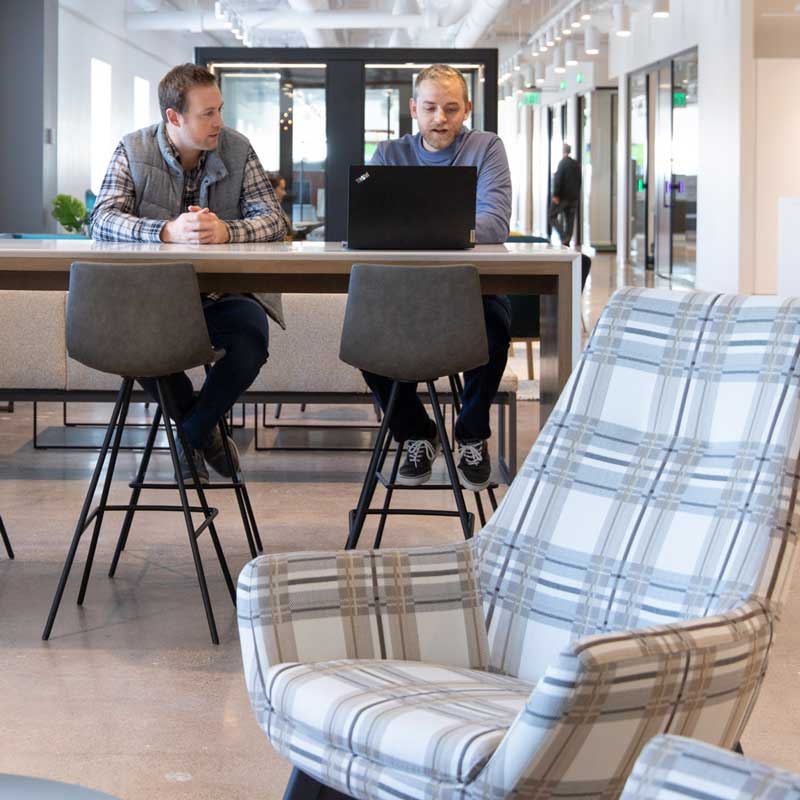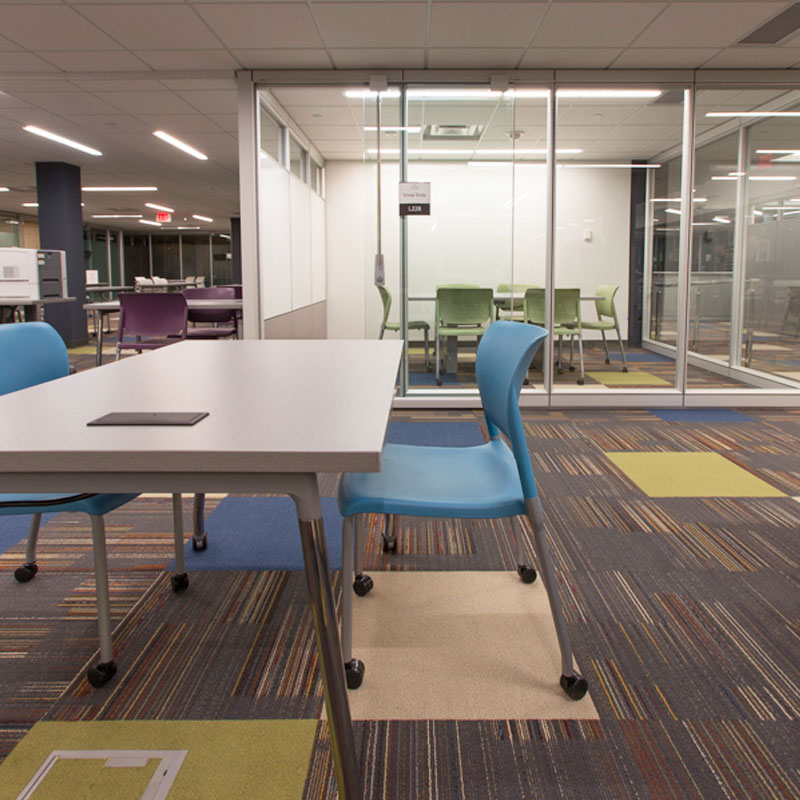Right now the biggest trend in office design is benching. There are several factors that may cause a company to transition from the typical office cube to an open plan design. Benching is often the cornerstone of this open plan. But just like a lot of good things, moderation may be the key to benching success. One size does not fit all.
The Upsides of Benching
A Collaboration Increase
With the walls, literally, coming down between workers–and departments–increased conversation, group interaction and information flow can change the culture of a typical office and create a new level of cooperation among employees. Benching solutions are ideal for hoteling, co-working and evolving, task-based work environments that diverge from the traditional, static cubical office environment.
Saving Space and Dollars
Benching is an effective way to maximize space. With no dividing panels stealing 3” or 6” here and there, an open plan with benching stations can accommodate a few more team members than a panel layout. Benching stations are typically more simple, with less storage, less room for “stuff” and fewer materials–typically resulting in significantly lower costs than traditional workstations.
Looks Cooler
The negative connotations associated with the traditional cube are thrown to the wind with most benching systems. They have clean, streamlined designs that can drastically change the aesthetic of an office. Despite an often slightly smaller work space, a benching station can lessen that claustrophobic feeling that a typical walled cube can generate–and open up views once obscured.

The Drawbacks of Benching
Distraction
Without walls to keep people away, inter-office conversation, personal phone calls–and other “personal” habits–may become amplified to the point of distraction. Without quiet, private places to do concentrated, heads-down work when needed, the increased buzz in an open benching environment can end up decreasing productivity for some.
Loss of Privacy
People have lives outside of the office. The ability to comfortably take personal phone calls and send personal emails is hindered by the open office environment. Everyone can see and hear everything. Perhaps that is the point of the open plan for some organizations, but the loss of this privacy in any environment can lead to a loss of job satisfaction, with productivity loss close behind.
Mess
The clean and streamlined aesthetic of the benching system can be interrupted by unique “personalizations” of work areas–and by all of the “stuff” we need to do work. This clutter has the potential to make an office feel messy and disorganized–particularly in areas frequented by the public or customers.

How to Make Benching a Success?
Office Rules
As panel walls disappear and privacy decreases it might be necessary to establish or re-examine office protocols. Implementing guidelines regarding personal phone calls at one’s desk; moving meetings to small conference rooms; and qualifying or limiting the personal items allowed at one’s work space might help combat the distraction that can result from a more open environment.
Increase Quiet Areas, Meeting Rooms and Break Spaces
In conjunction with changing office rules, it is important to give people places to go when they are either participating in or affected by potentially distracting behavior. Providing small meeting rooms that allow a quiet work environment for heads-down tasks; phone rooms in which people can make private calls; and encouraging the use of lounge areas and breakout spaces will increase the likelihood that an open plan office becomes a successful work environment for everyone.
Recognize This is Not a Solution for Everyone
Depending on the type of work done in a space, benching may not be a smart solution at all. While the benefits of an open plan may increase collaboration and productivity in certain types of work flows, remaining sensitive to the needs of employees that need more privacy and quiet to be effective is very important when designing any office.

Learn More
Be in touch and visit our 811 Glenwood Showroom to see benching solutions in action. Take a test drive and judge for yourself.


























